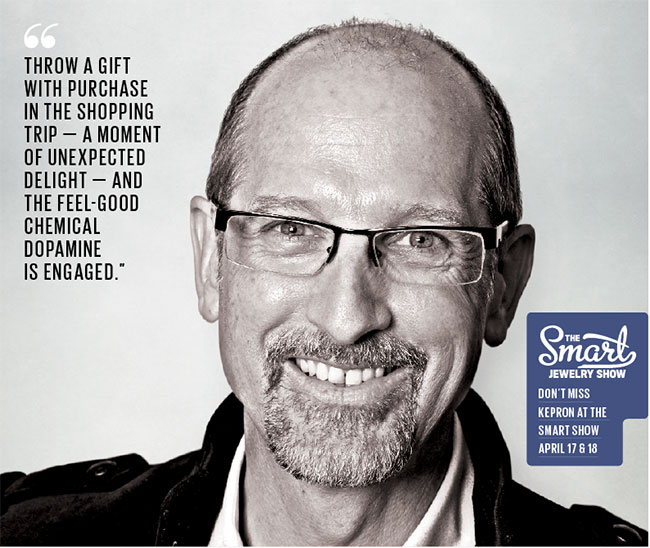
This article originally appeared in the January 2015 edition of INDESIGN.
I had been up late the night before. Preparing. This was going to be one of the best breakfasts I had ever made. One of the best gifts I had ever given.
Advertisement
I knew nothing about diamonds. But, I quickly learned about color, clarity and cut. I had chosen a stone to sit on a band of gold. Square on top, round on the bottom. A design I had sketched over and over again trying to find the right shape and look.
How would I propose? Over a breakfast. Actually, in a breakfast.
The night before, I had scored a raw egg with an X-Acto knife carefully separating the two halves, cleaning it out, and then affixing the velvet inside with glue. I placed the ring in the middle, glued the two halves back together, and placed it into the eggcup.
She said yes.
If I had to do it again, I’d do something similar. And I’d design the ring again too.
“If I owned a jewelry store,
I’d want every couple to
have the same creative
opportunity to bring to life
their vision — something
that reflects their unique
bond in a novel way.”
Advertisement
The brain finds delight in novelty. It turns out that dopamine, the pleasure chemical, is released when our brain picks up changes in patterns in our environment. Our brains are expert at understanding patterns in everything we experience, but even better at recognizing when an expected pattern has an anomaly. When the smallest thing is out of place or “new,” dopamine-producing neurons in our brains kick into gear.
Now here’s the catch: Experiencing something we could not have predicted produces three to four times the amount of dopamine than those rewards we could have predicted.
So, if I owned a jewelry store, it would be filled with novelty. Sure, customers want to know their stores are going to be basically the same every time they visit since consistency builds neural patterns and establishes expectations, but, throw a gift with purchase in the shopping trip — a moment of unexpected delight — and the feel-good chemical dopamine is engaged.
Presenting my wife with the engagement ring was even more memorable and filled with more pleasure because the experience was out of the ordinary.
We are all innately creative beings. This is a unique faculty that has fueled human invention and culture for millions of years. Making is empowering. When creating, we mold the world to our dreams and aspirations.
If retailers change customer experiences so that they are based on more than product depth and price points, they will better engage customers. There is more than just a sense of ownership in the products that customers make themselves. These products become more firmly fixed in time and place, having greater context and relevance in their lives.
Advertisement
If I owned a jewelry store, I would promote the idea of what I like to call “creative collaborative consumerism.” Recent technologies allow us to create objects and digital content with remarkable speed and ease. My jewelry store would be complete with 3-D printers, holographic projections and the ability to create ring settings and watch them come to life and be tried on within minutes.
Shopping has always been a social paradigm. This aspect of customer experience will never go away, but its expression will fundamentally change in the next few years driven by emerging communication technologies and ubiquitous computing. In a digitally driven future, nothing will be more relevant than the fostering of relationships. “Technempathy” is a word I coined to describe the use of technology in the service of empathic extension. In practice, this is about customers being able to create things by and for themselves, because these things will be uniquely about them and what’s meaningful in their lives.
In my jewelry store, technologies will be used to provide this creative expression of the brand, of the product assortment and … of love.
DAVID KEPRON is a creative director in the Brand Experience Studio at Little Diversified Architectural Consulting. He is a frequent international speaker on retail design and neuroscience and is the author of Retail (r)Evolution: Why Creating Right-Brained Stores Will Shape the Future of Shopping in a Digitally Driven World. Learn more at retail-r-evolution.com. He is still married to the same girl he surprised that May morning in 1989. The egg he made to present the ring sits on the shelf in their kitchen, and he still likes great breakfasts.